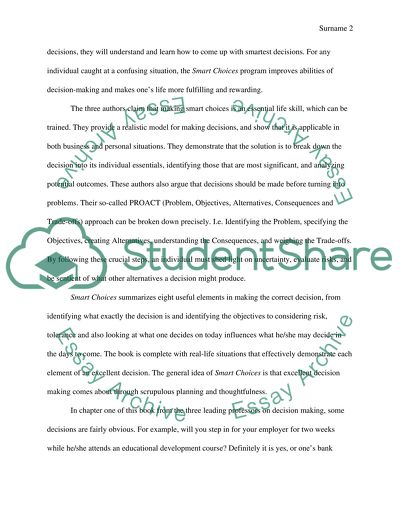Cite this document
(“SMART CHOICES by John Hammond Essay Example | Topics and Well Written Essays - 1500 words”, n.d.)
Retrieved from https://studentshare.org/english/1398938-book-review
Retrieved from https://studentshare.org/english/1398938-book-review
(SMART CHOICES by John Hammond Essay Example | Topics and Well Written Essays - 1500 Words)
https://studentshare.org/english/1398938-book-review.
https://studentshare.org/english/1398938-book-review.
“SMART CHOICES by John Hammond Essay Example | Topics and Well Written Essays - 1500 Words”, n.d. https://studentshare.org/english/1398938-book-review.


